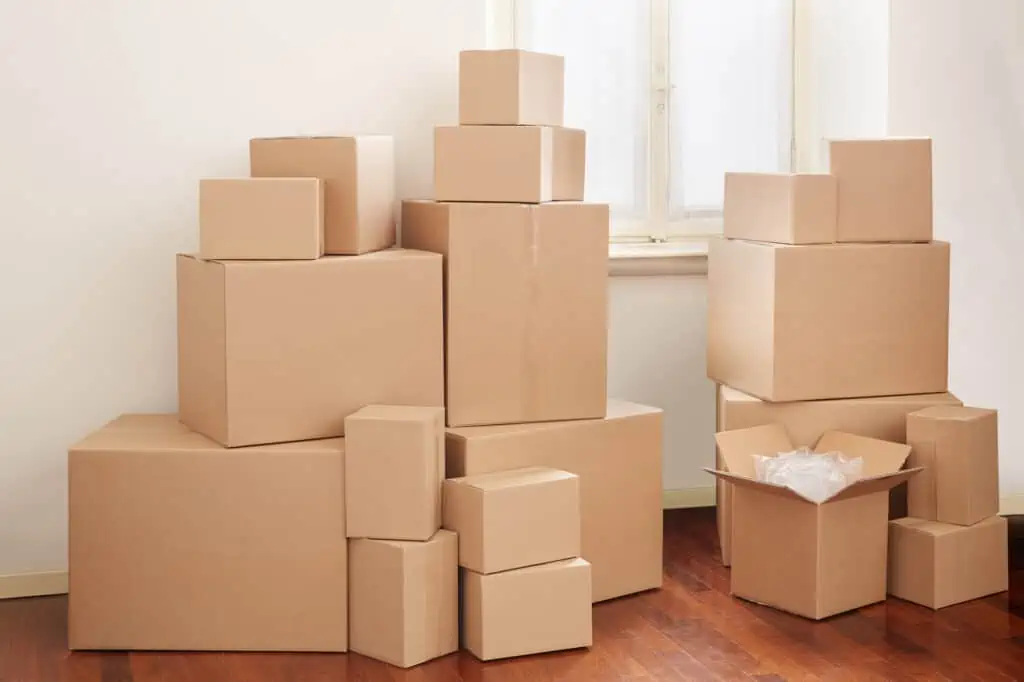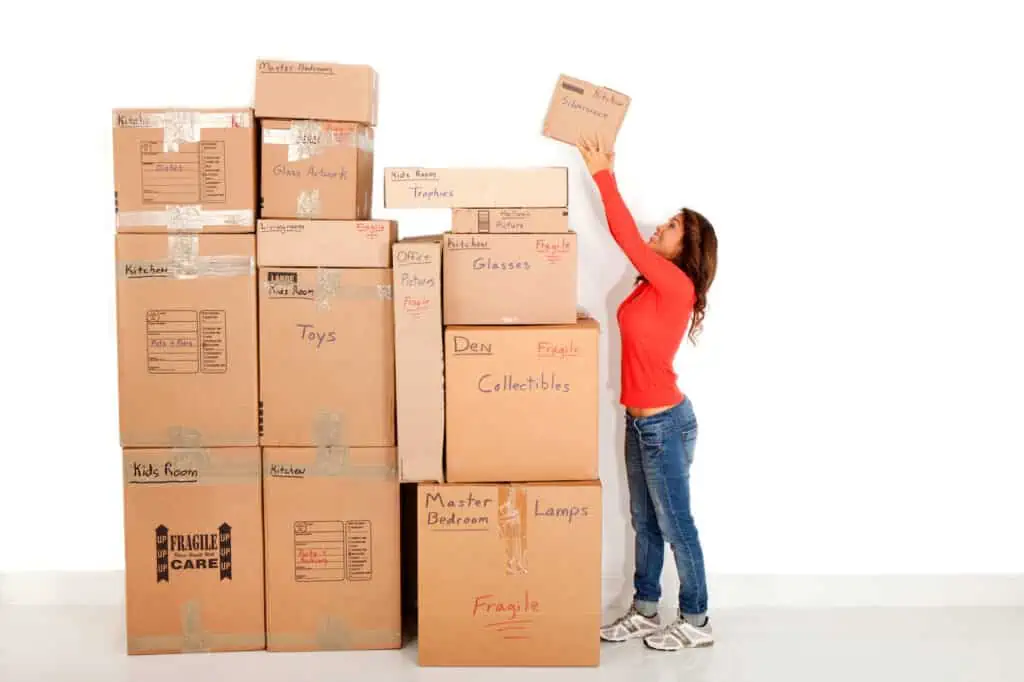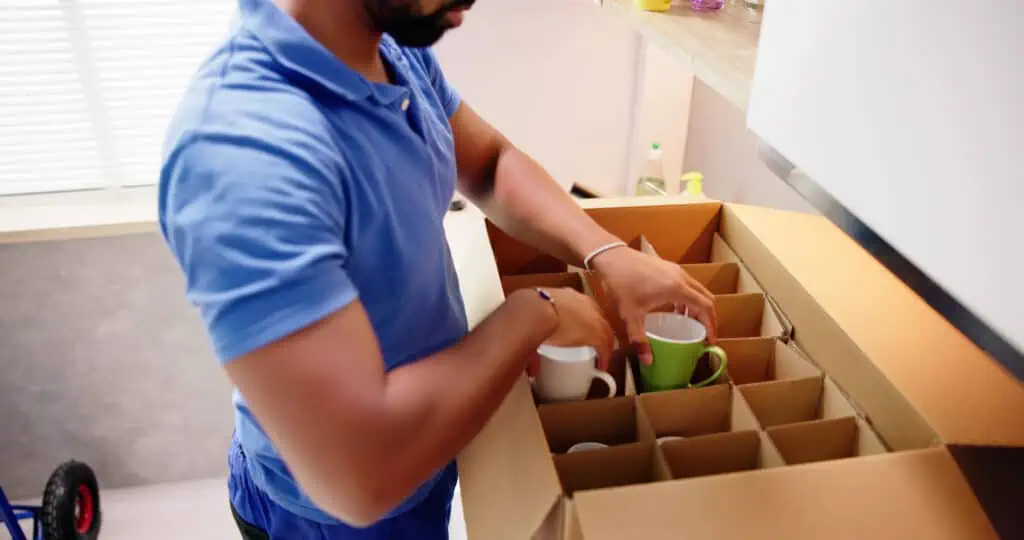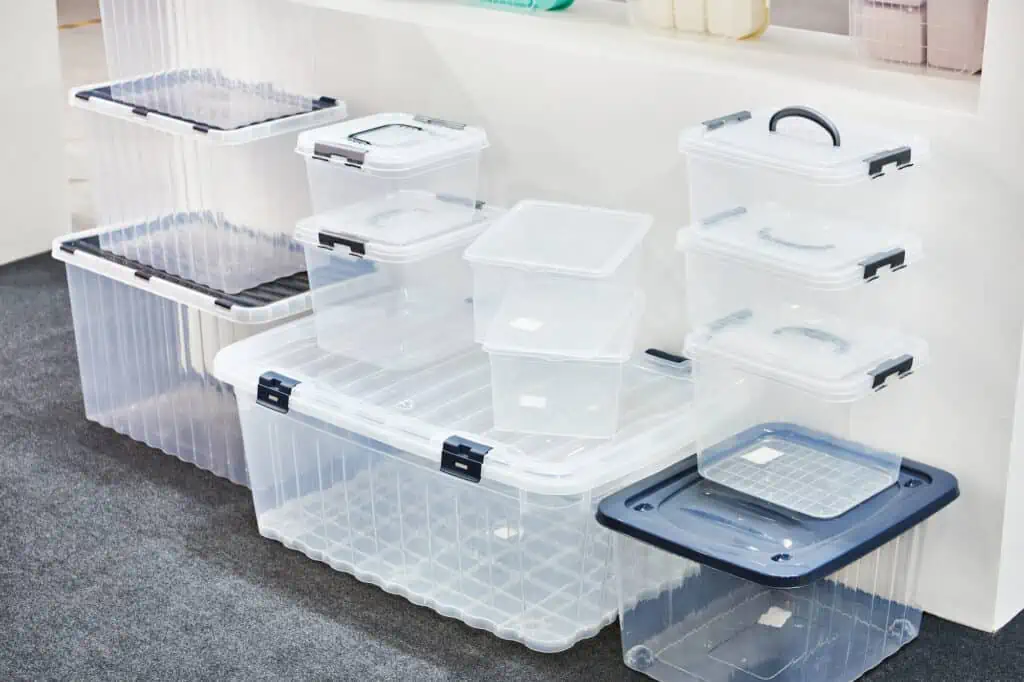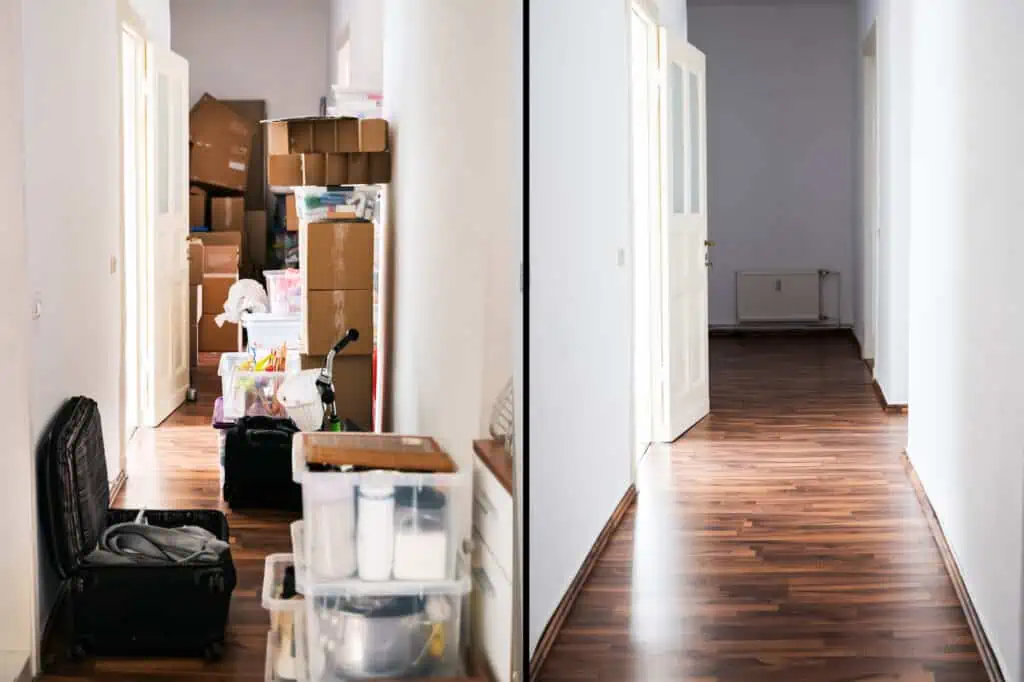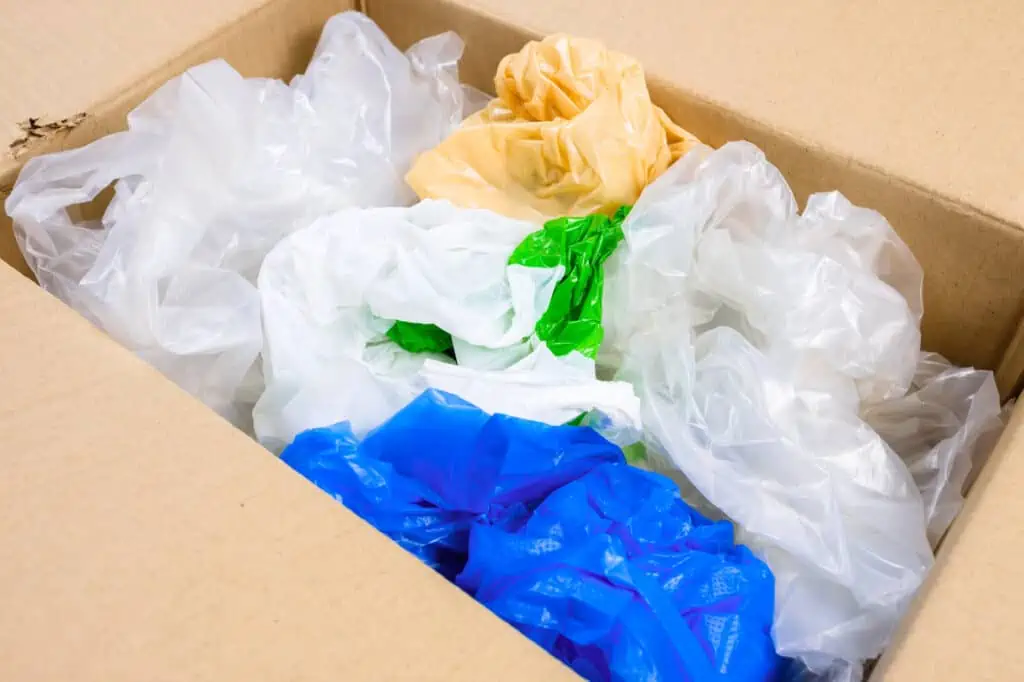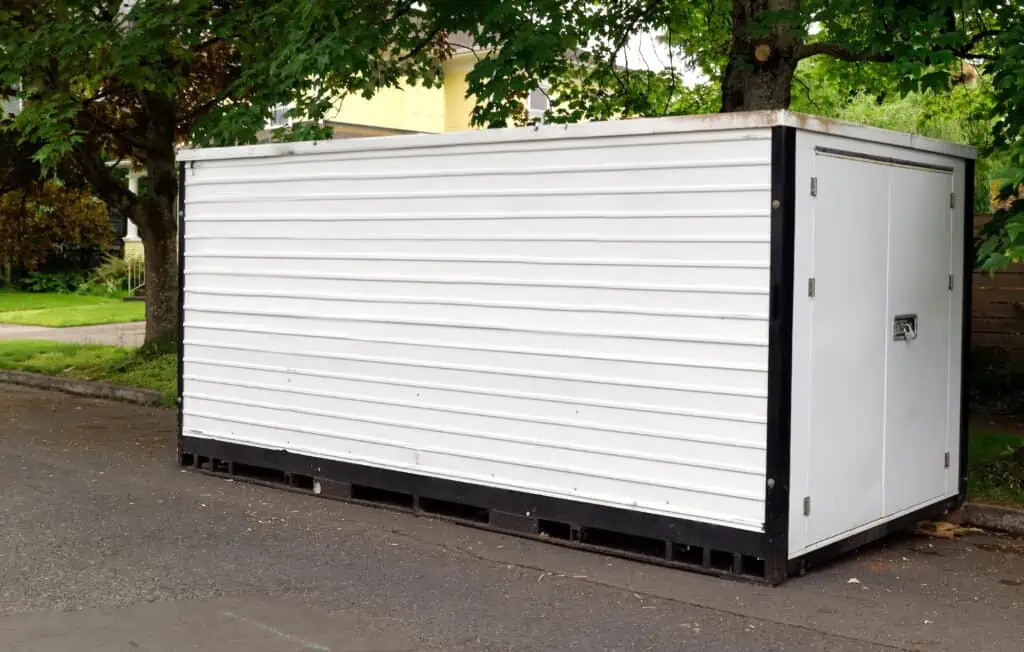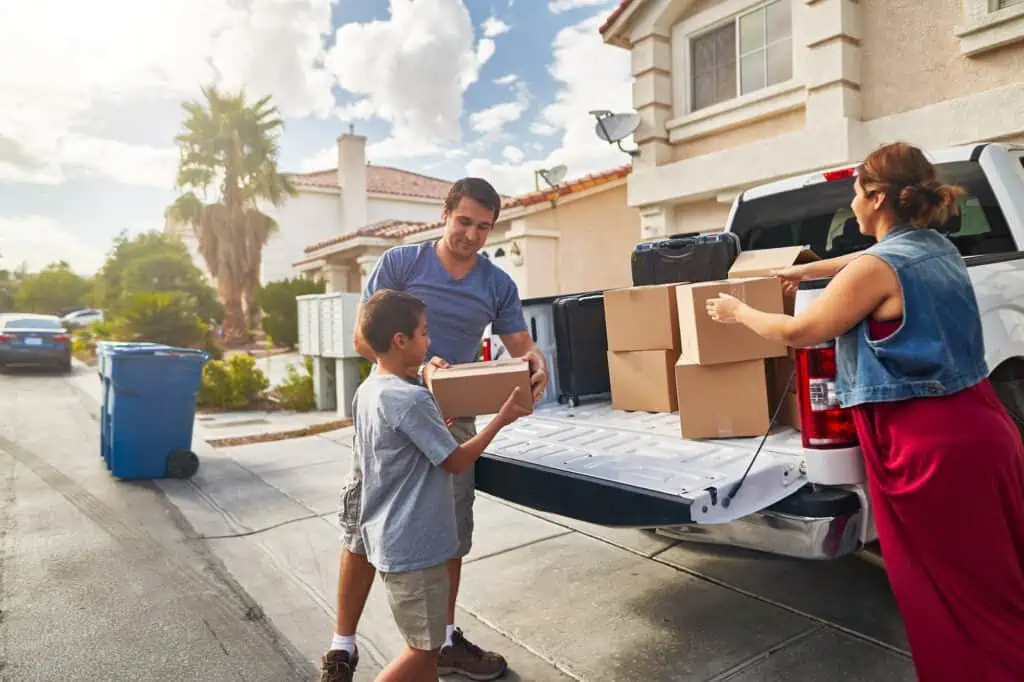In a way, moving boxes can be considered the unsung heroes of a successful move. Quietly, they play a vital role in ensuring your belongings reach their new destination intact. But do the types of boxes you move with really matter? Yes, they can.
(Looking for where to get free moving boxes? Here’s our guide to where to get moving boxes.)
Especially if you’re moving long-distance or have delicate items in your inventory, your choice of moving boxes can make or break — pun intended — your move, making a significant difference in the safety of your possessions. If you have the time and budget to order the right boxes, you can increase the likelihood that your items arrive in one piece, saving you time, hassle, and money in the long term.
So, let’s explore the world of moving boxes with a guide that will not only help you choose the right types of moving boxes for your move but also help you pack them right.
Moving Box Sizes
Appropriately sized boxes prevent over-packing, ensuring that each box remains manageable in weight. This not only allows for ease of handling but also helps maintain the structural integrity of the box itself — which means you don’t have to worry about collapsed or busted boxes.
“You can find cheap or free boxes on websites such as Facebook Marketplace, Nextdoor, or OfferUp, and even at local retailers like grocery or liquor stores.”
Overloading a box can lead to it breaking or items getting damaged during the move. On the other hand, using boxes that are too large for the items being packed can result in inadequate support, increasing shifting during transit.
So before you start packing, take a look at this rundown of the most common moving box sixes to make sure you’re selecting the right size for your items.
Book Boxes
- Dimensions: 12” x 12” x 12” or up to 1.5 cubic feet
- Volume: Holds up to 65 lbs.
Book boxes are light, durable, and compact, which makes them suitable for carrying small but dense items. You can use these boxes to transport your books, photo albums, puzzles, board games, DVD collections, and small picture frames.
There are also best practices for packing your books during a move, which can be helpful no matter the type of box you use.
Three-Cubic Boxes
- Dimensions: 18 ⅛” x 18″ x16″
- Volume: Holds up to 65 lbs.
Three-cubic boxes are sturdy enough to contain common household items of various weights and sizes. You can use these boxes to transport kitchenware, home decor, linens, towels, pillows, medium appliances, children’s toys, and craft or office supplies.
See prices for local moving labor. Read real customer reviews. Easily book your help online.
Large Cartons
- Dimensions: 18″ x 18″ x 24″ (or 4.5 cubic feet)
- Volume: Holds up to 65 lbs.
Large cartons are made for tall, bulky, or oblong items that require a considerable amount of space. Think: clothing, desk lamps, heavy blankets, curtains, stereo speakers, and small to medium electronics.
Extra-Large Cartons
- Dimensions: 24″ x 18″ x 24″ (or 6 cubic feet)
- Volume: Holds up to 65 lbs.
Extra-large cartons have both the depth and roominess to hold your most cumbersome items. You can use these boxes to transport large home decor, TV monitors, floor lamps, curtain rods, winter coats, bed comforters, and other hefty objects.
Moving Box Types
Now that we’ve explored all the moving box sizes to be aware of, let’s talk about the types of moving boxes.
Here’s a guide to the most common moving boxes and how best to pack them to maximize space and ensure your valuables remain intact during transport. There’s no one-size-fits-all formula for how to pack and move your items, but these tips can definitely streamline the process for you.
Wardrobe Boxes
What They’re For: Clothes on hangers (coats, blouses, skirts, dresses, pants, suits)
How to Pack Them:
- It’s basically like packing a portable closet: Hang each piece of clothing on the box’s horizontal metal bar, spacing the items close together to prevent wrinkling during transit
- Place accessories like belts or shoes at the bottom of the wardrobe box to optimize space
- Alternatives: The main benefit of using a wardrobe box is that it’ll keep your clothes organized, clean, and virtually wrinkle-free, while never taking them off their hangers. But there are certainly other ways to pack clothes! Consider vacuum-sealed bags, especially for bulkier coats or winter garments that would otherwise take up a lot of space, or use pieces of clothing (like sweatshirts) as a cushion to pack other delicate items. You can also use plastic storage boxes, as demonstrated in this video
Dishware Boxes
What They’re For: Plates, bowls glasses, utensils, coffee mugs, other cookware
How to Pack Them:
- Bundle each item securely in newspaper or bubble wrap to create a protective cushion
- Place the heaviest items at the bottom of the box, then stack each piece of kitchenware as tightly as possible so there’s no excess room for the items to shift around while in transit
- Check out this kitchen packing video playlist for more tips
- Alternative: Since most kitchenware is fragile, you need a firm, durable box to keep them safe. But if you’re on a budget for this move (or you don’t want the hassle of ordering a specialty box), check out the U-Haul Box Exchange. This online resource will connect you with local residents who are giving away their boxes and moving supplies — or selling them at a discounted rate. You may just find some free dishware boxes, or some sturdy alternatives
Frame and Mirror Boxes

What They’re For: Photographs, artwork, plaques, mirrors, other framed objects
How to Pack Them:
- Bundle each item securely in a blanket, towel, or bubble wrap to reinforce the glass
- Place the heaviest pictures at the bottom of the box, then stack the others horizontally on top of each other
- Make sure there’s no excess room for the items to shift around in transit
- Got an odd-shaped mirror? Here’s a video on how to pack it
- Alternative: Because glass is famously breakable, it’s crucial to protect your framed mirrors and other wall decor as much as possible. But if you don’t have a tall enough box, you can transport them individually. Reinforce each side of the frame with a foam sheet or another cushion material, then double-wrap it in a heavy blanket and tightly secure the corners with moving tape.
Flat-panel TV Boxes
What They’re For: Television and large computer screens (between 32–70 inches)
How to Pack Them:
- Place all electronic cables, remotes, routers, modems, surge protectors, and other external devices in a plastic bag ( and take a picture before you disassemble your setup!)
- Detach the monitor’s stand or wall mount, then bundle the screen in a blanket, bubble wrap, or foam sleeve
- Need a visual aid? This video shows how the pros pack TVs
- Alternative: Similar to packing frames and mirrors, you can also transport a television or computer monitor without a box if you use the right protective materials. Bundle the screen with bubble wrap, then reinforce the corners with foam cushioning. Double-wrap the screen in a heavy blanket and tightly secure it with moving tape. This isn’t as effective as a box, but it works in a pinch
Electronics Boxes
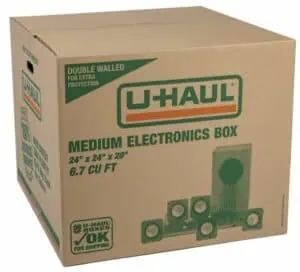
What They’re For: Computers, game consoles, microwaves, stereo systems, other electric appliances or devices
How to Pack Them:
- Remove the batteries or cartridges from all electronics to prevent leakage and corrosion
- Place cables and other external attachments in a plastic bag, and tape the bag with blue painter’s tape to the back of the appliance
- Bundle each device in a blanket, bubble wrap, or foam sleeve
- Place the heaviest items at the bottom, then stack the others as tightly as possible so there’s no excess room for shifting around during transit.
- Alternative: Because of their delicate (and often pricey) nature, computers and electronics require sturdy boxes. But, if you don’t want to invest in specialty electronics boxes, normal three-cubic boxes or large cartons with proper cushioning do the job as well. You can find cheap or free boxes on websites such as Facebook Marketplace, Nextdoor, or OfferUp, and even at local retailers like grocery or liquor stores.
Plastic Storage Bins
What They’re For: Cleaning products, office supplies, bathroom items, towels, linens, curtains, tools, miscellaneous accessories
How to Pack Them:
- Since plastic storage bins are extremely durable, and the objects you’ll pack in them are generally not breakable, there’s no need to wrap each item
- Fold towels and linens, place them at the bottom, then arrange the other items compactly inside the storage bin, making sure there’s no excess room.
- Reinforce the bin with moving tape
- Alternatives: If you don’t have plastic storage bins on hand, there are plenty of other organizational containers you can use to transport miscellaneous items. Options include metal or wood crates, industrial wire baskets, collapsible canvas utility totes, or suitcases/backpacks/gym bags. You can even place certain items in empty furniture drawers, then cover each drawer with shrink wrap, so the objects won’t fall out.
Whether you’re relocating out of state or transporting valuable items that can easily break, there’s no need to stress about which boxes to choose or how to correctly pack them — just follow the tips above, and you’ll be set to hit the open road!

